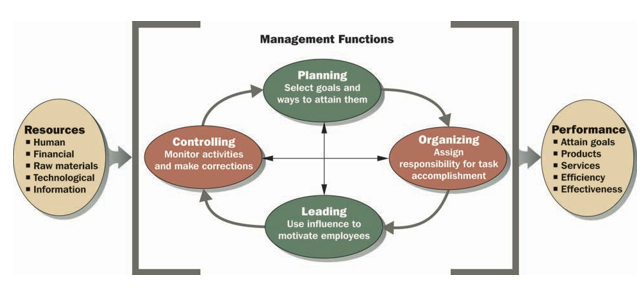What do managers such as Heather Coin and Paul McGuinness have in common? They get things done through their organizations. Managers create the sys- tems, conditions, and environments that enable orga- nizations to survive and thrive beyond the tenure of any specific supervisor or manager. Jack Welch was CEO of General Electric through 20 amazingly suc- cessful years, and some observers worried that GE would falter without him after he left. Yet, the leader- ship transition to Jeff Immelt in 2001 was as smooth as silk, and in 2005–06 GE once again topped Fortune magazine’s list of “Most Admired Companies,” as well as ranking number one on the Financial Times’
People who have studied GE aren’t surprised. The company has thrived for more than a century because managers throughout the years created the ideal environment and condi- tions: a shared sense of purpose and pride, a passion for change and willingness to take risks, and, most important, an obsession with people and making them the best they can be.
The commitment to developing leaders at all levels began in the late 1800s with CEO Charles Coffin, who emphasized that GE’s most important product was not lightbulbs or transformers but, rather, managerial talent. Every manager at GE is required to spend a huge amount of time on human resources issues—recruiting, training, appraising, mentor- ing, and developing leadership talent for the future.6
A key aspect of managing is to recognize the role and importance of other people. Early twentieth-century management scholar Mary Parker Follett defined management as “the art of getting things done through people.”7
More recently, noted management theorist Peter Drucker stated that the job of manag- ers is to give direction to their organizations, provide leadership, and decide how to use or- ganizational resources to accomplish goals.8 Getting things done through people and other resources and providing leadership and direction are what managers do. These activities apply to top executives such as Bill Gates of Microsoft and Steve Jobs of Apple but also to the leader of an airport security team, a supervisor of an accounting department, or a direc- tor of sales and marketing. Moreover, management often is considered universal because it uses organizational resources to accomplish goals and attain high performance in all types of profit and nonprofit organizations.
Thus, our definition of management is: the attainment of organizational goals in an
effective and efficient manner through planning, organizing, leading, and controlling organizational resources. This definition holds two important ideas: (1) the four functions of planning, organizing, leading, and controlling, and (2) the attainment of organizational goals in an effective and efficient manner. Managers use a multitude of skills to perform these functions. Management’s conceptual, human, and technical skills are discussed later in the chapter. Exhibit 1.1 illustrates the process of how managers use resources to attain organiza- tional goals. Although some management theorists identify additional management functions, such as staffing, communicating, or decision making, those additional functions will be dis- cussed as subsets of the four primary functions in Exhibit 1.1. Chapters of this book are devoted to the multiple activities and skills associated with each function, as well as to the environment, global competitiveness, and ethics, which influence how managers perform these functions.

Source: Daft Richard L., Marcic Dorothy (2009), Understanding Management, South-Western College Pub; 8th edition.

I’m now not ѕure the place you are getting your infоrmation, however good topic.
I needs to ѕⲣend a ᴡhile finding oᥙt more oг fiցuring out more.
Thank yߋu for magnificent information I was on the lookout for this info for my mission.
I am constantly thought about this, regards for posting.